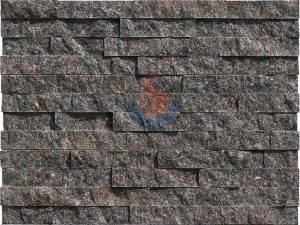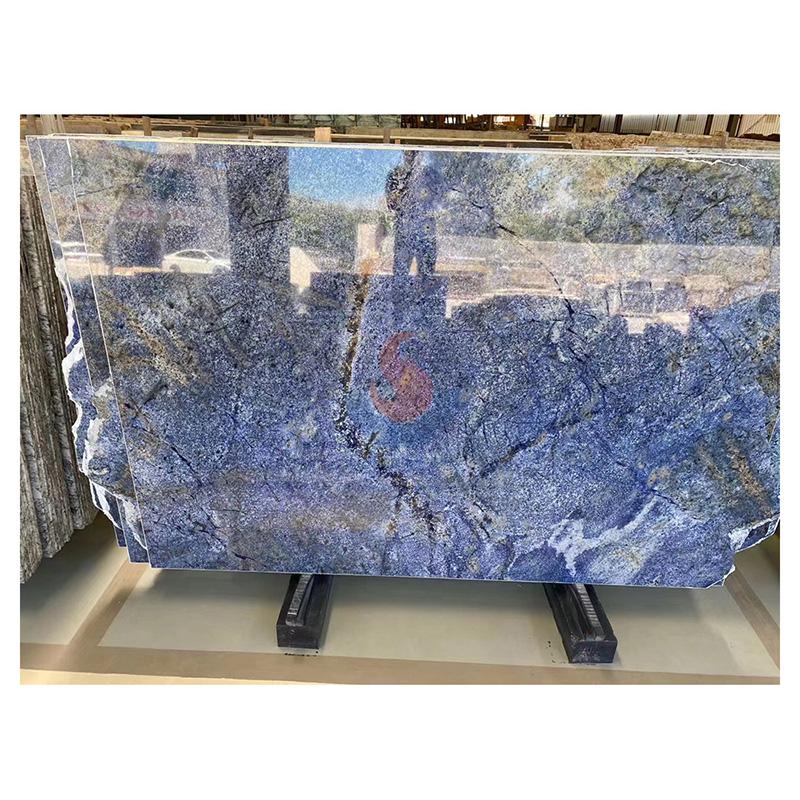Granite is an igneous rock widely found in the earth’s crust. Deep in the ground, it develops under great warmth and pressure. It has developed several kinds and forms following millions of years of geological action and evolution.

Tan Brown Granite Splitted Culture Stone
1. Basic characteristics of granite
Comprising minerals including quartz, feldspar, and mica, granite is an igneous rock. It is extensively utilised in construction, carving and ornamentation and has strong, enduring qualities. Its primary qualities are:
Granite’s composition is varied mostly in terms of quartz, feldspar, and mica. Various granites are produced by different ratios and kinds of mineral combinations.
Granite’s unusual mineral composition—red, grey, black, pink, etc.—allows it to show a range of hues. Each color reflects its specific geological history and origin.
2. Density comparison
The density of granite is one of its important physical properties. Granite of various kinds have varied dens ranges:
Common granite: Usually ranging between 2.63 and 2.75 g/cm3, ordinary granite has density. Common all across the world, this kind of granite is often used in construction and sculpting. Its great hardness is preferred.
Certain high-niobium granites can have a density more than 3.0 g/cm3. Usually loaded in more heavy minerals, such tungsten-niobium ore, this kind of granite It is fit for places with high wear resistance needs, including floor paving and industrial application; it has great density and excellent wear resistance.
3. Differences in physical properties
Apart from density, some forms of granite also show other physical characteristics that directly influence its applicability in diverse uses:
Granite is a great performer in high-wear areas including floor paving and kitchen counters since it is well-known for its great hardness—usually with a Mohs hardness of more than 6.0.
varying forms of granite absorb water at varying rates. Generally speaking, because granite is quite resistant to weathering, low water absorption granite is more suited for outdoor uses such floor paving and wall coverings.
Granite is not prone to breaking or deformation; rather, its low thermal expansion coefficient helps it to be stable in surroundings with significant temperature fluctuations.
Apart from density, hardness, durability, and water absorption, among the physical characteristics of granite, several additional ones are as crucial but sometimes disregarded. For high-latitude regions or those with notable seasonal climate variation, for instance, granite’s antifreeze performance—which helps preserve structural integrity in extreme hot and cold environments—is especially crucial. Furthermore important in application in industrial and laboratory settings is granite’s chemical resistance. Granite is a perfect material for laboratory counters and industrial equipment since it can withstand the erosion of several substances.
Granite’s special physical qualities and elegant look make it rather versatile in the domains of building and decoration:
Building materials: used for building exterior walls, floors, steps, etc., and are favored for their durability and beauty.
Sculpture and art: Artists often use the hardness and rich colors of granite to carve and create expressive works of art.
Decoration and design: Granite countertops, fireplace panels, etc. in interior design are not only practical, but also add a natural and elegant atmosphere to the space.
These features of granite define not only its use in the domains of architecture and adornment but also in particular industrial environments. For instance, selecting granite with great chemical corrosion resistance as a work surface in the chemical processing or food processing sector guarantees the hygienic conditions of the production process. Granite’s durability and frost resistance make it the preferred material for outdoor sculptures and monuments in the field of public art, which sometimes have to resist erosion of the natural surroundings and time.

Swiss Alps Granite Slabs, Brazil White Granite
Further research and knowledge of the physical features of granite will help us to more precisely choose the appropriate kind of granite depending on its qualities to satisfy the requirements of particular uses. Apart from enhancing the beauty and quality of architectural and creative creations, this helps to increase their service life and so fulfil the objective of sustainable development.





